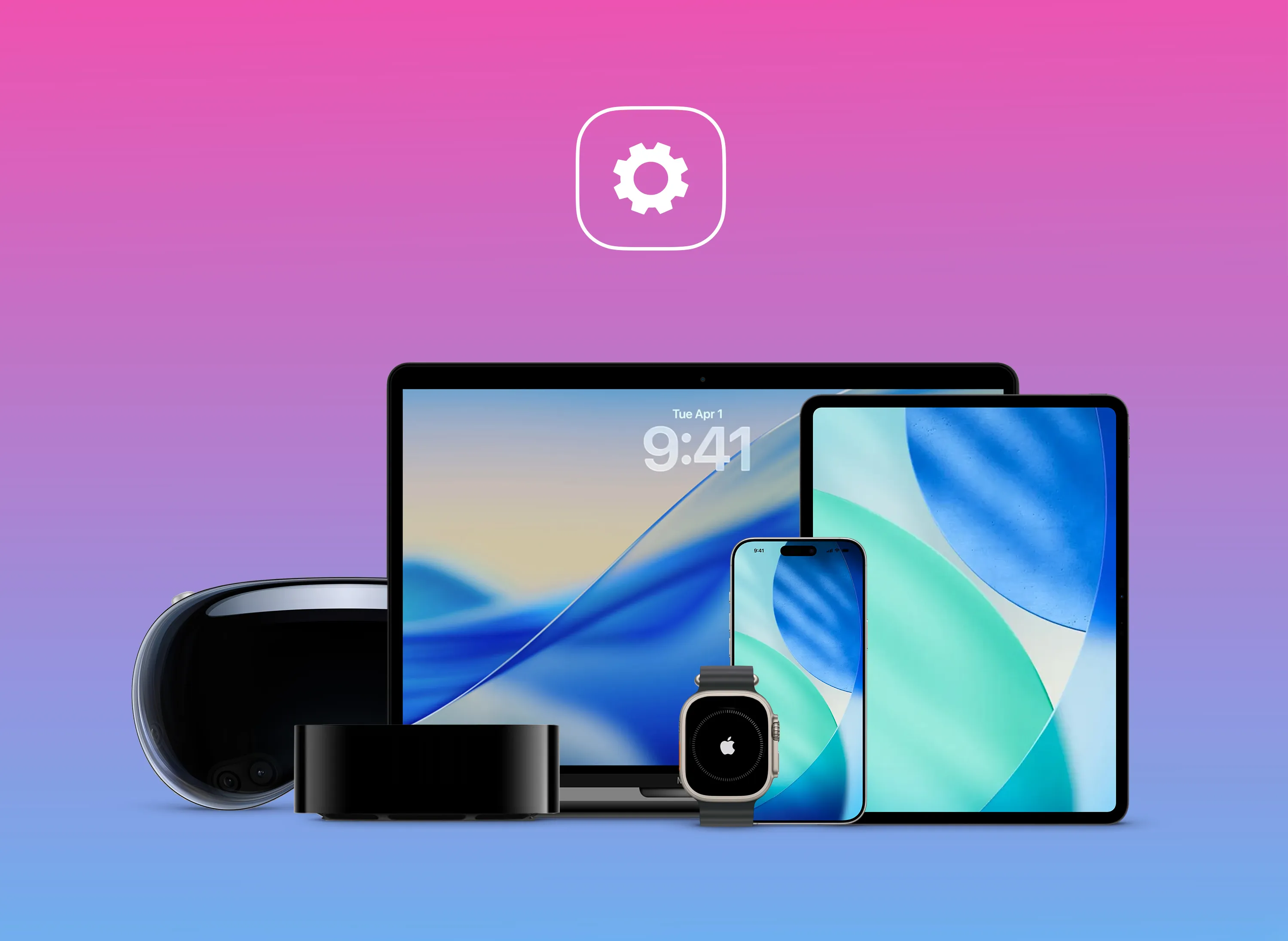What is an MDM and what does it do?

Mobile Device Management (MDM) is a software solution that enables organisations to securely manage, monitor, and control mobile devices across their network. MDM platforms provide centralised administration of smartphones, tablets, laptops, and other mobile endpoints used by employees, whether company-owned or personal devices brought into the workplace.
What Does MDM Do?
Core Functions
Device Enrollment and ConfigurationMDM automatically configures devices with company settings, security policies, and approved applications during the initial setup process. This ensures consistency across all managed devices whilst minimising manual IT intervention.
Security Policy EnforcementThe platform enforces security requirements such as mandatory screen locks, encryption, password complexity, and automatic updates. If devices fall out of compliance, MDM can restrict access to corporate resources until issues are resolved.
Application ManagementMDM controls which applications can be installed, pushes approved software to devices, and removes unauthorised or potentially harmful applications. This includes managing both company-purchased and user-installed applications.
Content and Data ProtectionCorporate data remains protected through containerisation, which separates business information from personal content. MDM can remotely wipe corporate data without affecting personal files, photos, or applications.
Remote Monitoring and SupportIT teams gain visibility into device status, location, compliance, and performance metrics. Remote troubleshooting capabilities reduce the need for physical device access whilst maintaining security standards.
Types of MDM Deployment
Company-Owned, Business-Only (COBO)
Devices are purchased and owned entirely by the organisation. These devices typically contain only business applications and data, providing maximum control and security.
Company-Owned, Personally-Enabled (COPE)
The organisation owns the device but allows employees to use it for personal activities. This approach balances security requirements with user flexibility.
Bring Your Own Device (BYOD)
Employees use their personal devices for work purposes. MDM manages only the corporate portion of the device whilst preserving user privacy for personal content.
Choose Your Own Device (CYOD)
Companies provide employees with a selection of approved devices to choose from. This offers some personalisation whilst maintaining standardised management capabilities.
MDM Platforms and Operating Systems
Apple Ecosystem
macOS and iOS ManagementApple's tight integration between hardware and software creates unique management opportunities. Features include:
- Apple Business Manager for automated device enrollment
- Device Enrollment Program (DEP) for zero-touch deployment
- Volume Purchase Program (VPP) for application licensing
- FileVault encryption management for Macs
- Activation Lock bypass for corporate devices
Key Apple MDM Platforms:
- JAMF Pro Industry-leading Apple-focused MDM with deep integration
- Mosyle Comprehensive Apple device management platform
- Kandji Modern Apple MDM with automation focus
- SimpleMDM Streamlined Apple device management solution
Microsoft Windows
Windows 10/11 ManagementMicrosoft provides extensive enterprise management capabilities through:
- Windows Autopilot for automated provisioning
- Azure Active Directory integration
- BitLocker encryption management
- Windows Update for Business controls
- Microsoft Store for Business application deployment
Key Windows MDM Platforms:
- Microsoft Intune Native Microsoft solution with deep Windows integration
- VMware Workspace ONE Enterprise-grade unified endpoint management
- IBM MaaS360 AI-powered security-focused platform
Google Android
Android Enterprise ManagementGoogle's enterprise framework enables:
- Work profile separation on personal devices
- Fully managed device deployment
- Dedicated device configuration for kiosks
- Google Play Managed for application distribution
- Advanced security controls through Android for Work
Key Android MDM Platforms:
- Google Workspace Native Google device management
- Samsung Knox Hardware-enhanced security platform
- MobileIron Enterprise mobility management specialist
Cross-Platform Solutions
Unified Endpoint Management (UEM)Many organisations require management across multiple operating systems:
- Microsoft Intune Manages Windows, iOS, Android, and macOS
- VMware Workspace ONE Comprehensive multi-platform support
- Citrix Endpoint Management Enterprise-focused cross-platform solution
Advantages of MDM
Enhanced Security
MDM provides robust protection against data breaches, malware, and unauthorised access. Encryption, remote wipe capabilities, and compliance monitoring significantly reduce security risks.
Centralised Management
IT teams can manage hundreds or thousands of devices from a single console, dramatically reducing administrative overhead whilst maintaining consistent policies across the organisation.
Compliance Assurance
Automated compliance monitoring ensures devices meet regulatory requirements such as GDPR, HIPAA, or industry-specific standards. Non-compliant devices can be automatically restricted from accessing sensitive resources.
Improved Productivity
Streamlined device provisioning, automated software deployment, and remote troubleshooting capabilities reduce downtime and enable employees to work efficiently from any location.
Cost Reduction
Centralised management reduces IT support costs, whilst application licensing through volume programmes and device lifecycle management optimises technology spending.
User Experience
Modern MDM platforms provide self-service capabilities, allowing users to resolve common issues independently whilst maintaining corporate security standards.
Disadvantages and Challenges
Privacy Concerns
Employees may resist MDM deployment due to concerns about personal privacy, particularly on BYOD devices. Clear communication about what data is accessed and how it's used is essential.
Implementation Complexity
Large-scale MDM deployments require careful planning, user training, and ongoing management. Integration with existing IT infrastructure can present technical challenges.
Cost Considerations
MDM licensing, implementation services, and ongoing support represent significant investments, particularly for smaller organisations with limited IT budgets.
User Resistance
Employees may find MDM restrictions inconvenient, particularly limitations on application installation or device customisation. Change management becomes crucial for successful adoption.
Platform Limitations
No single MDM solution excels across all operating systems. Organisations with diverse device environments may need multiple platforms or accept reduced functionality on some devices.
Ongoing Management Requirements
MDM platforms require continuous monitoring, policy updates, and security patches. Organisations must allocate sufficient IT resources for effective management.
Choosing the Right MDM Platform
Assessment Criteria
Device EnvironmentConsider the mix of operating systems, device types, and deployment models your organisation requires. Apple-focused businesses benefit from specialised platforms like JAMF Pro, whilst mixed environments may require cross-platform solutions.
Security RequirementsEvaluate compliance needs, industry regulations, and security policies. Some platforms offer enhanced security features for specific industries or use cases.
Integration CapabilitiesAssess how well MDM platforms integrate with existing IT infrastructure, including directory services, security tools, and business applications.
Scalability and SupportConsider your organisation's growth plans and the vendor's ability to provide ongoing support, training, and platform development.
Implementation Best Practices
Planning Phase
Develop clear policies covering device usage, security requirements, and user responsibilities. Engage stakeholders early to address concerns and build support for the initiative.
Pilot Deployment
Start with a small group of users to test functionality, identify issues, and refine policies before organisation-wide rollout.
User Communication
Provide clear information about MDM benefits, privacy protections, and support resources. Address concerns proactively to build user confidence.
Training and Support
Ensure IT staff receive proper training on platform administration whilst providing users with resources for common tasks and troubleshooting.
Monitoring and Optimisation
Regularly review compliance reports, user feedback, and security metrics to optimise policies and improve the overall experience.
Future Considerations
Zero Trust Security
MDM platforms increasingly integrate with zero trust security frameworks, providing continuous device verification and risk assessment.
Artificial Intelligence
AI-powered analytics help identify security threats, predict device issues, and automate routine management tasks.
Remote Work Evolution
The shift towards hybrid and remote work models drives demand for more sophisticated MDM capabilities that support flexible working arrangements whilst maintaining security.
MDM represents a critical component of modern IT infrastructure, enabling organisations to harness the productivity benefits of mobile technology whilst maintaining security and compliance standards. Success depends on choosing the right platform for your environment and implementing it with proper planning, communication, and ongoing management.








